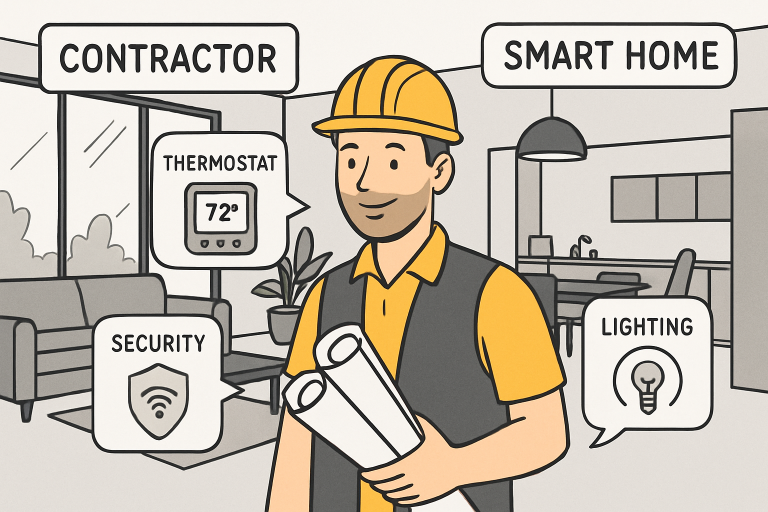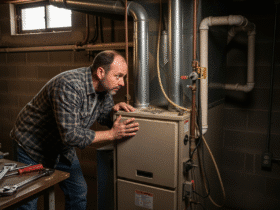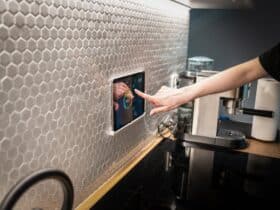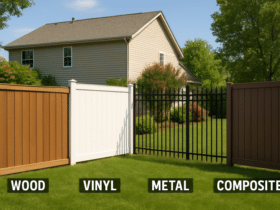Table of Contents
- Embracing Open-Concept Living
- Integration of Smart Home Technologies
- Sustainable and Green Building Approaches
- Modular and Prefabricated Construction
- 3D Printing in Construction
- Health and Wellness Features
- Personalization and Customization
- Conclusion
Modern home construction is advancing rapidly, and today’s homeowners expect more than just walls and a roof. From cutting-edge energy efficiency to intuitive smart home technologies, the influence of a quality general contractor extends well beyond basic building skills. These professionals bring innovative visions to life while ensuring construction integrity and adapting to trends in sustainability, wellness, and personalized living. Choosing a skilled contractor isn’t just about finishing on time, but also about creating a durable, stylish, and comfortable home that meets modern needs. The right builder’s value is critical, as homeowners depend on experts to incorporate cutting-edge technology, eco-friendliness, and long-lasting quality.
Adherence to construction best practices is essential. Contractors’ knowledge of codes and trends allows seamless integration of open-concept spaces, new materials, and durable methods that resist weather. In hurricane-prone areas, wind mitigation strategies protect homeowners and investments, highlighting the importance of quality craftsmanship and safety.
Embracing Open-Concept Living
The hallmark of modern home design is openness, both in physical layout and aesthetic. Compartmentalized homes are fading in popularity as today’s property owners desire spaces that facilitate interaction, movement, and natural light. Incorporating wind mitigation features into home design is also increasingly important in areas prone to storms, helping to protect the structure without compromising style. Quality contractors know how to reengineer existing floor plans, carefully removing barriers while ensuring essential supports remain, resulting in smooth transitions between kitchens, dining areas, and living rooms. Open-concept layouts foster community, flexibility, and a greater sense of space, making homes feel larger and more welcoming.

Integration of Smart Home Technologies
Technological innovation is revolutionizing the way people experience their homes. Smart thermostats, security systems, built-in speakers, and automated lighting have moved from luxury features to mainstream expectations. Contractors must now stay up to date with the latest devices and installation practices to ensure seamless networking and reliable operation. Efficient integration enhances homeowner convenience and provides significant energy savings, with platforms such as Google Home and Amazon Alexa becoming household staples.
Sustainable and Green Building Approaches
Environmental consciousness shapes many construction choices today. Using renewable materials, high-performance insulation, and advanced window glazing are just a few methods contractors employ to lessen a home’s environmental footprint. Solar panels, rainwater harvesting, and greywater recycling help conserve natural resources, while energy-efficient appliances and HVAC systems keep utility costs low. Leading builders not only comply with green building codes but often exceed them, delivering healthier and more efficient living spaces.
Modular and Prefabricated Construction
Time and labor efficiency have given rise to modular and prefabricated homes, where entire segments or rooms are built off-site and assembled in place. This approach can slash construction times by weeks, provide more predictable project outcomes, and reduce job-site waste—an important boost for sustainability. Quality contractors work closely with manufacturers, orchestrating the delivery and assembly of each prefab element with precision to ensure a seamless integration and a cohesive final product.
3D Printing in Construction
Construction’s next chapter is being written with 3D printers. From structural walls to custom components, 3D printing rapidly fabricates intricate elements with minimal waste—speeding up project timelines while lowering costs. Building firms worldwide are experimenting with this technology for everything from affordable housing to ambitious luxury builds, demonstrating how innovation can make safer, better housing accessible to more people.
Health and Wellness Features
For today’s homeowners, wellness is a top priority. Residential design now emphasizes features that actively support wellness, including enhanced air and water purification systems, indoor plants, and soothing color palettes. Contractors are also introducing amenities such as home gyms, spa-like bathrooms, and outdoor living spaces that encourage relaxation and healthy habits. Maximizing daylight through large windows and thoughtful orientation further boosts well-being and productivity for residents.
Personalization and Customization
Every homeowner’s needs and tastes are unique, and modern contractors cater to this by offering a wide range of customization options. Flexible floor plans, creative storage solutions, bespoke finishes, and integrated technology allow clients to build homes that reflect their personalities and aspirations. Through close collaboration, contractors transform personal visions into tangible spaces, ensuring satisfaction and a strong emotional connection with the final product.
Conclusion
Today’s quality contractors are more than builders—they are key partners in shaping modern life. Their expertise in blending form and function, leveraging new technologies, and employing sustainable practices is vital to the evolution of the contemporary home. As the housing market continues to shift, these professionals remain at the center of progress, creating homes that are not only beautiful and comfortable but also responsible, efficient, and built to last.








